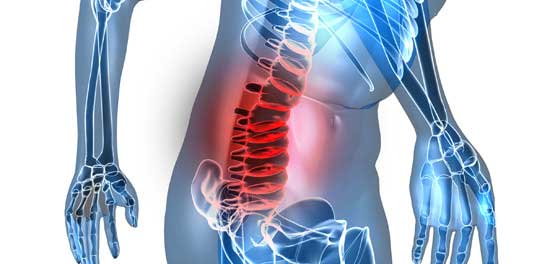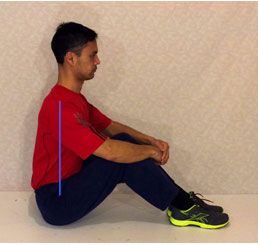
Do this Seated Twist exercise to help stop back spasms
By Sherwin Nicholson | May 1, 2020
This Simple and Easy Move is a Great Remedy for Anyone
Do you ever get intense pain from a spasm by doing nothing at all to trigger it?
It doesn’t make sense right? Most of the time we are just sitting, reaching or doing something totally harmless.
The pain can be so intense that it feels like we did something wrong.
Unfortunately, this is how your body tries to stop you from what you are trying to do to prevent a nerve, muscle or disc injury. There are also other causes involved such as your overall muscle conditioning, lower back flexibility, deep back muscle strength, diet, disease conditions and more.
If you are in the middle of a spasm right now, then seek much needed step by step help now.
Get started with this one move
One thing that you can do to help prevent them from happening again is to both stretch and strengthen your muscles at the same time. Yes! That’s the key to keeping any muscle happy. There are many excellent exercises that should be performed to address your back spasms but the one I am demonstrating here is one of the easiest and best.
Many people don’t believe that they have a problem until a full onset spasm occurs. At this point, you need to start committing to keeping your body flexible.
The Seated Twist is a great exercise. It is #5 of the Challenge Exercises of the Program,
Doing this simple move helps you by:
- Encouraging you to rotate both the upper and lower area of your back (for hip mobility and flexibility).
- Stretching tight muscles (for mobility, reduces stiffness).
- Strengthening both the deep muscles of the spine and back (reduces stiffness).
- Strengthens the abdominals (reduces excessive anterior pelvic tilt, preserves neutral position).
Make a point of using this twist in the morning, afternoon and evening. Back spasms usually come during an unexpected twisting motion of poorly conditioned muscles. By strengthening the muscles that are needed during this every day (but risky) movement, you can help reduce your risk of back spasms. (It is important to have consent from your family doctor prior to any routine such as the Standing Hip Shift.)
Seated Twist
Step 1: Sit comfortably with knees together and upright.

Step 2: With one hand beside you, and the other behind you, gently rotate your upper body to the side as far and as comfortably as possible.

Step 3: Hold for 1 minute and rest.
Step 4: Repeat by twisting in the other direction.
Step 5: Repeat often.
Note: While in the hold position, your upper body will respond faster than your lower back. Maintain the hold for a longer period initially so that all of your muscles will have a chance to respond. The goal is to relax into a hold and not to force a turn.
Tip: When you can reach the point where you can twist easily, do it unassisted and without using your hands. This allows you to recruit and strengthen the back muscles to actively control your rotational flexibility instead of passively.
This is a tough movement and hold to perform initially. Any initial stiffness will prevent you from fully twisting. Be patient as your flexibility will improve with time.
When performing this exercise, you may tend to slouch while twisting. Try to be more aware of this while keeping your back as straight as possible.
Take deep and controlled breaths as you rotate. Keep your knees bent as in the images shown and together. This helps to flex the leg muscles in order to activate your core muscles.
Be sure to pause at the end of the twist (fully left or right) and then return to the forward position.
If you are tired of enduring this form of chronic pain, I would like to encourage you to give my Program your commitment.
It’s not some quick fix, magic plan because your back won’t heal so quickly.
Your back needs commitment and specialized retraining which is what my program it all about. No BS. Just hard work. It saved me of my misery of over 10 years with little help and it has helped thousands (No BS either).
Also, you are not on your own with this program. You can email me anytime for support along the way!
– Sherwin
“I started noticing a difference in my back within three days.”
“I came across your website. It was as if it was talking about me. The anterior pelvic tilt, the tight hip flexor muscles, the weak glutes, hamstrings and Abs….I am now on day 5 and I am already noticing an improvement in my posture and reduced pain.”
Read what others who have done the Program have to really say!
I am ready to get started Sherwin!
Would you like more help?
Get some great BS (back spasm) tips here
Avoid that spasm by following this rule
Please give me more help for my back
References:
- Acute pain-Diagnosis and treatment of acute lbp. Casazza BA1.-http://www.ncbi.nlm.nih.gov/pubmedhealth/PMH0004668/
- Early Management of Persistent Non-specific Lbp. NICE Clinical Guidelines, No. 88 http://www.ncbi.nlm.nih.gov/pubmedhealth/PMH0005442/
- Effects of stabilization exercises on health-related quality of life in women with chronic lbp.-http://www.ncbi.nlm.nih.gov/pubmed/24184617
